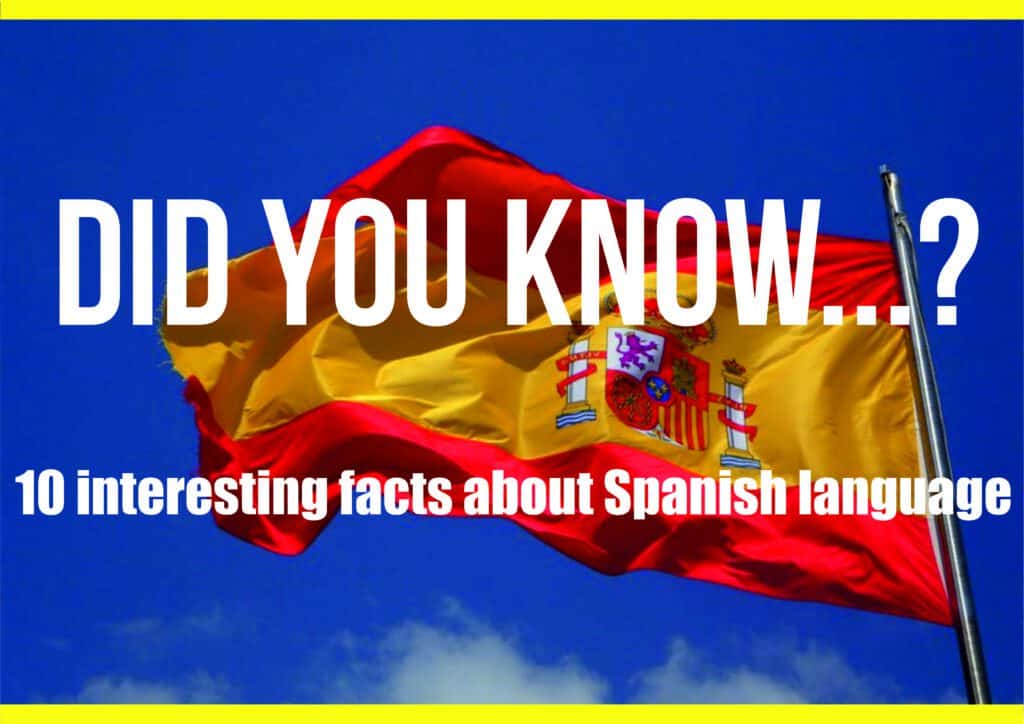10 Interesting Facts about Spanish Language!
What do you know about Spanish?
Spanish is a unique language which is spoken in many different countries around the world, such as Spain, countries in Latin America, the US and others. Want to know more about it?
Check out these super interesting facts about Spanish!
1. Firstly, Spanish is the primary language of 22 countries worldwide, and it is the primary language of Latin American countries (with the exception of Brazil), Spain, and Equatorial Guinea.
2. Furthermore, It is the second language in the world in terms of native speakers.
3. It derives from a dilect of spoken latin which dates back to the 5th century in the north-central Iberian Peninsula. The dialect people spoke later in Toledo was the basis for the written standard, but that was not before the 13th century.
4. Also, it was the diplomatic language in the 16th and 17th centuries. Spanish started to expand around the globe with the growth of the Spanish Empire and its colonialism in America, Africa, Asia and Oceania but with the Napoleonic Wars French replaced Spanish as the lingua franca.
Now Spanish is expanding again, being the second language used in trade and the third in politics and diplomacy.
5. In addition, the largest population of Spanish speakers is in Mexico with 114 million and it is followed by the US with 50 million.
6. About 70% of the words in Spanish language are of Latin origin? Some examples are “actrix” (In Spanish it’s “actriz” and it means actress), “administrātor” (administrador in Spanish or administrator in English), “abstractus” (abstracto in Spanish or abstract in English) and many others….
7. Spanish is the only language that uses an inverted question mark (¿) and exclamation mark (¡) to begin a question or exclamation. Some minority languages in Spain also use these. Examples of these are: ¿Cómo estás? (How are you?) or ¡Hola! (Hi!)
8. There are 17 tenses in Spanish considering the three moods: Indicative, Subjunctive and Imperative. Unfortunately, the Subjunctive Mood tends to be very difficult to understand by speakers of non-Romance languages as it works in a more complex way.
9. Also, the letter “ñ” in the Spanish alphabet is the only one of Spanish origin. For instance: “ñoquis” (gnocchi), “baño” (bathroom), “año” (year), “araña” (spider) and many others. It sounds like the letters “n” and “y” together in the English word “canyon”.
10. Finally, Spanish and English share lots of words that look similar but have a totally different meaning. These are called false cognates or false friends. For example the words “embarazada” (pregnant) and “embarrassed” or “carpeta” (folder) and “carpet”.

